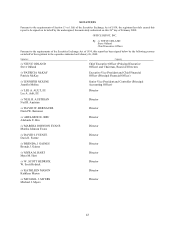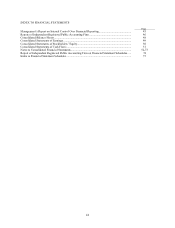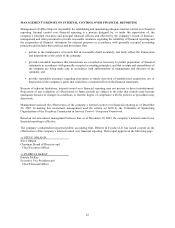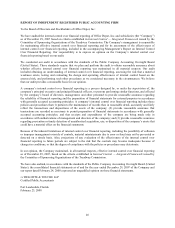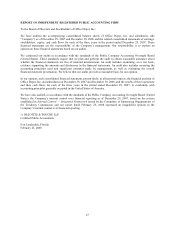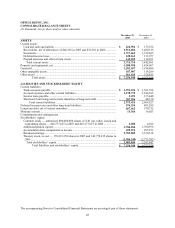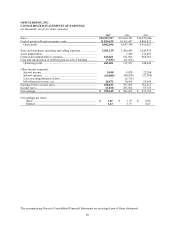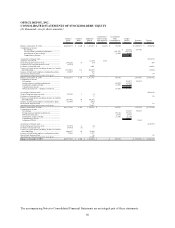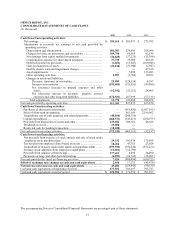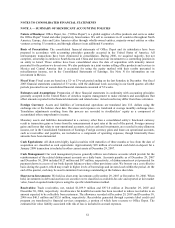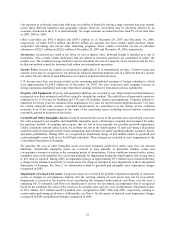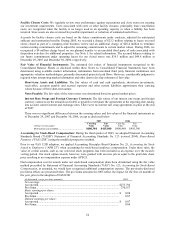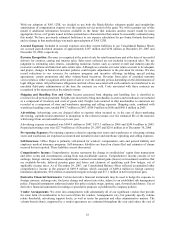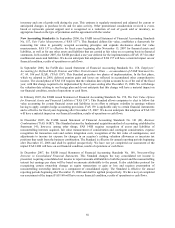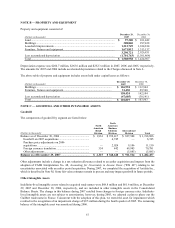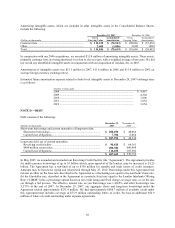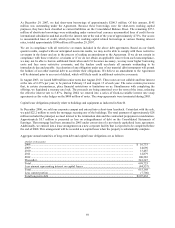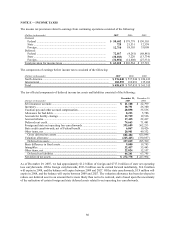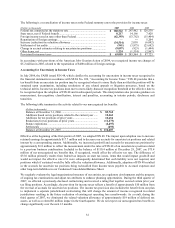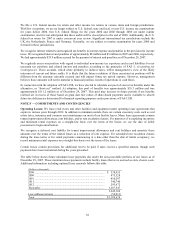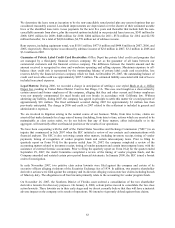Office Depot 2007 Annual Report Download - page 55
Download and view the complete annual report
Please find page 55 of the 2007 Office Depot annual report below. You can navigate through the pages in the report by either clicking on the pages listed below, or by using the keyword search tool below to find specific information within the annual report.53
Our exposure to credit risk associated with trade receivables is limited by having a large customer base that extends
across many different industries and geographic regions. However, receivables may be adversely affected by an
economic slowdown in the U.S. or internationally. No single customer accounted for more than 5% of our total sales
in 2007, 2006 or 2005.
Other receivables are $471.8 million and $509.3 million as of December 29, 2007 and December 30, 2006,
respectively, of which $378.2 million and $459.4 million are amounts due from vendors under purchase rebate,
cooperative advertising and various other marketing programs. These vendor receivables are net of collection
allowances of $22.1 million and $20.2 million at December 29, 2007 and December 30, 2006, respectively.
Inventories: Inventories are stated at the lower of cost or market value. In-bound freight is included as a cost of
inventories. Also, certain vendor allowances that are related to inventory purchases are considered to reduce the
product cost. The weighted average method is used to determine the cost of a majority of our inventory and the first-
in-first-out method is used for inventory held within our international operations.
Income Taxes: Income tax expense is recognized at applicable U.S. or international tax rates. Certain revenue and
expense items may be recognized in one period for financial statement purposes and in a different period’s income
tax return. The tax effects of such differences are reported as deferred income taxes.
U.S. income taxes have not been provided on the remaining undistributed earnings of foreign subsidiaries, which
were approximately $1,564.2 million as of December 29, 2007. We have reinvested such earnings overseas in
foreign operations indefinitely and expect that future earnings will also be reinvested overseas indefinitely.
Property and Equipment: Property and equipment additions are recorded at cost. Depreciation and amortization is
recognized over their estimated useful lives using the straight-line method. The useful lives of depreciable assets are
estimated to be 15-30 years for buildings and 3-10 years for furniture, fixtures and equipment. Computer software is
amortized over three years for common office applications, five years for larger business applications and 7-10 years
for certain enterprise-wide systems. Leasehold improvements are amortized over the shorter of the estimated
economic lives of the improvements or the terms of the underlying leases, including renewal options considered
reasonably assured at inception of the leases.
Goodwill and Other Intangible Assets: Goodwill represents the excess of the purchase price and related costs over
the value assigned to net tangible and identifiable intangible assets of businesses acquired and accounted for under
the purchase method. Accounting rules require that we test at least annually for possible goodwill impairment.
Unless conditions warrant earlier action, we perform our test in the fourth quarter of each year using a discounted
cash flow analysis that requires that certain assumptions and estimates be made regarding industry economic factors
and future profitability. During 2005, we recognized an impairment charge of $41 million related to goodwill and
certain intangible assets held in our Tech Depot subsidiary. These charges are included in asset impairments in the
Consolidated Statements of Earnings.
We amortize the cost of other intangible assets over their estimated useful lives unless such lives are deemed
indefinite. Amortizable intangible assets are reviewed at least annually to determine whether events and
circumstances warrant a revision to the remaining period of amortization. Unless conditions warrant earlier action,
intangible assets with indefinite lives are tested annually for impairment during the fourth quarter and written down
to fair value as required. During 2005, an impairment charge of approximately $9.5 million was recorded following
a change in the estimated useful life of a trade name; the charge is included in asset impairment in the Consolidated
Statements of Earnings. See Note L for information related to goodwill and intangible asset impairment charges
recognized in 2005.
Impairment of Long-Lived Assets: Long-lived assets are reviewed for possible impairment annually or whenever
events or changes in circumstances indicate that the carrying amount of such assets may not be recoverable.
Impairment is assessed at the location level, considering the estimated undiscounted cash flows over the asset’s
remaining life. If estimated cash flows are insufficient to recover the investment, an impairment loss is recognized
based on the estimated fair value of the asset less its carrying value and any costs of disposition.Impairment losses
of $3.3 million, $2.3 million and $3.4 million were recognized in 2007, 2006 and 2005, respectively, relating to
certain under-performing retail stores. Additionally, see Note L for discussion of material asset impairment charges
recognized in 2005 and additional charges recognized in 2006.


